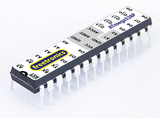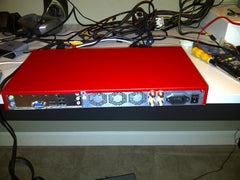After spending time working with the Arduino platform there will come a time when you may want to start directly programming the microcontroller or smaller, cheaper versions such as the ATtiny series. To do so requires a seperate programmer, however if you have an Arduino it can be used as one, saving some money. To help us along Michael Holachek has created a video tutorial on how to use the Arduino as an AVR programmer. It is clear, articulate and easy to follow:
For the matching notes to his video, click here. And for more, we're on twitter and Google+, so follow us for news and product updates as well.
If you're interested in working with the bare microcontrollers, but not quite ready to give up the Arduino bootloader - we've got you covered with our new ATmega328P MCUs with Arduino Uno bootloader:

This is the same Atmel AVR ATmega328P microcontroller used in the official Arduino Uno, as well as our Eleven, EtherTen, USBDroid, and other boards. Perfect for building your own Arduino-compatible project directly on a breadboard or on a custom PCB, or for replacing the MCU in an existing board. Comes with the Arduino Uno bootloader pre-installed. Better still, it even has a special label stuck on top with details of the pinout, so you don't even need to look up the datasheet when connecting it up in your project! For more information and to order, click here!






















